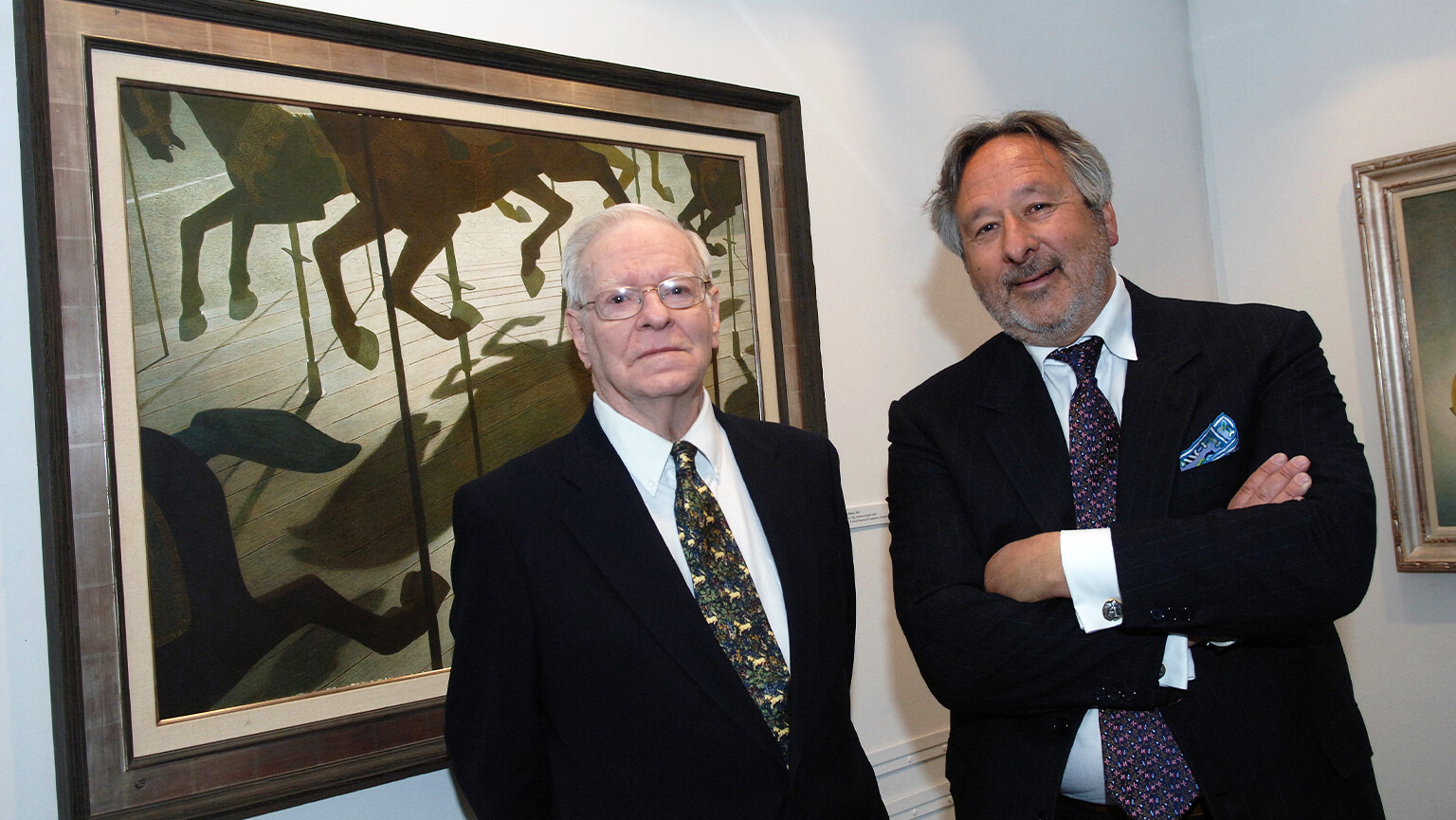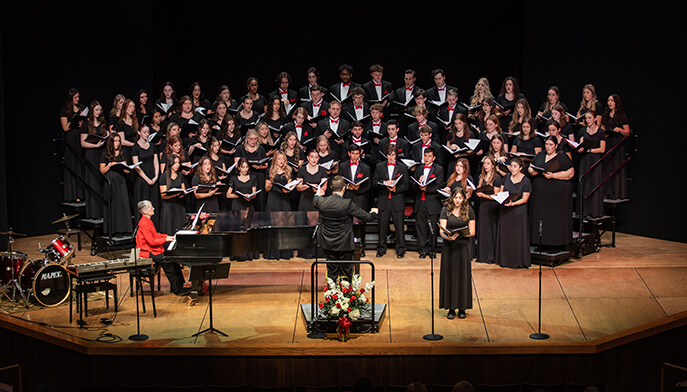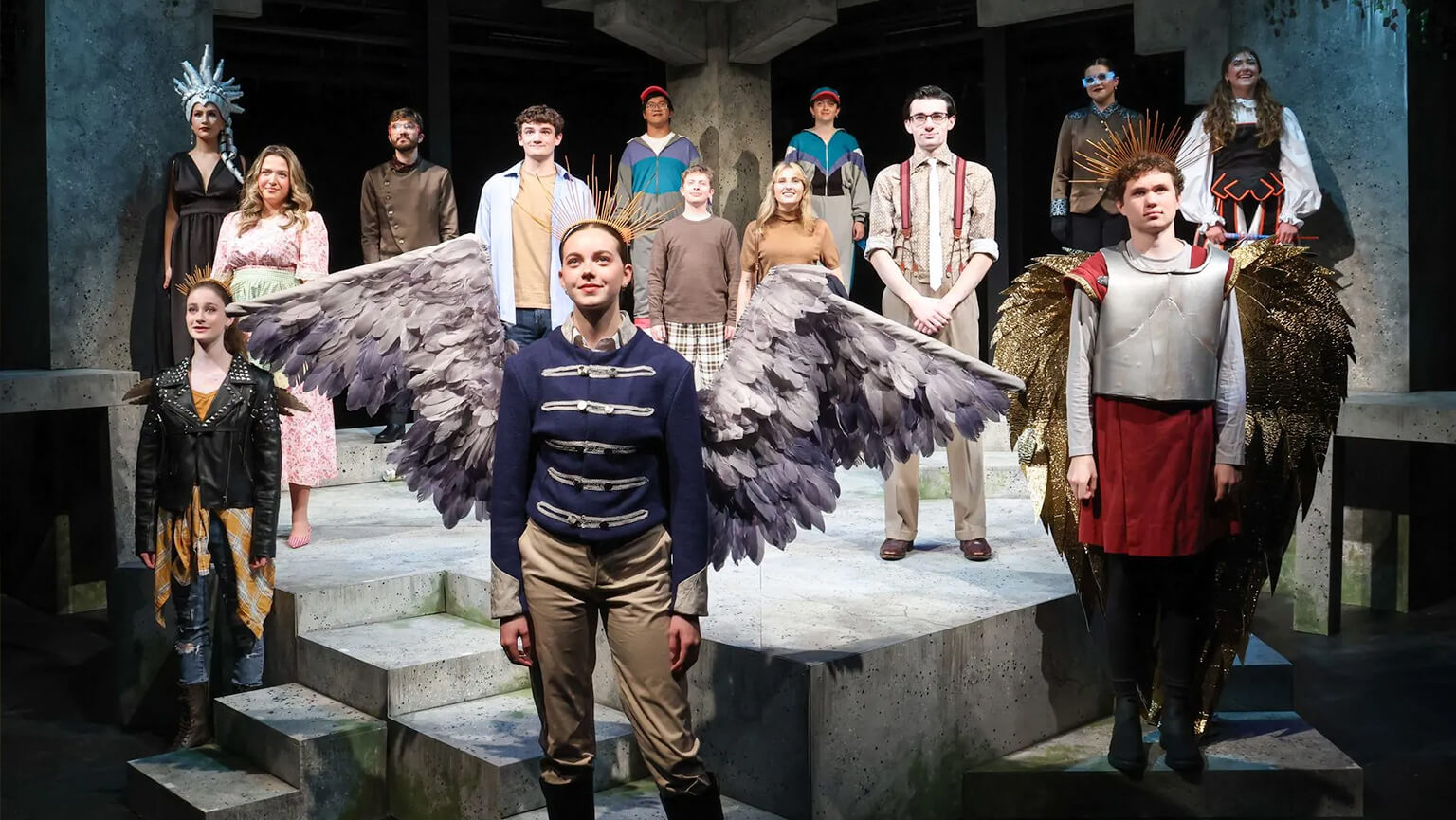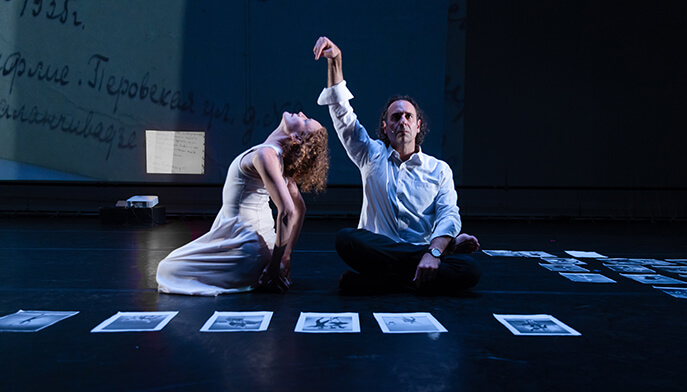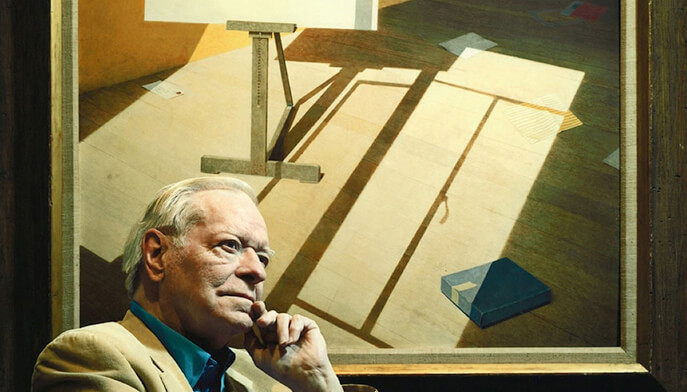
An essay on Robert Vickrey by Philip Eliasoph, PhD—featured in the recently published collection 150 Stories: Lives of the Artists at the League—is the latest University connection to the life and legacy of the artist.
Robert Remsen Vickrey is perhaps best known for his contributions to the field of egg tempera painting, his iconic Time magazine covers, and his daring and rather unorthodox approach to his art form. However, he is also deeply connected to Fairfield University, with Special Assistant to the President for Arts and Culture Philip Eliasoph, PhD, serving as the key lynchpin between University and artist over the years.
In a recent publication from The Art Students League of New York titled 150 Stories: The Lives of the Artists at the League, Dr. Eliasoph penned a new essay on Vickrey, the latest installment in the annals of Vickrey’s connections to Fairfield. The essay recounts Vickrey’s time with the Art Students League, as well as select high points of his education and career.
In a literal sense, Vickrey’s legacy continues on campus, with two works by the artist housed in the offices of the President and the Provost—one, a portrait of Cardinal Richard Cushing and the other, a recognizable Vickrey painting of Catholic nuns belonging to the Daughters of Charity of the Society of St. Vincent de Paul.
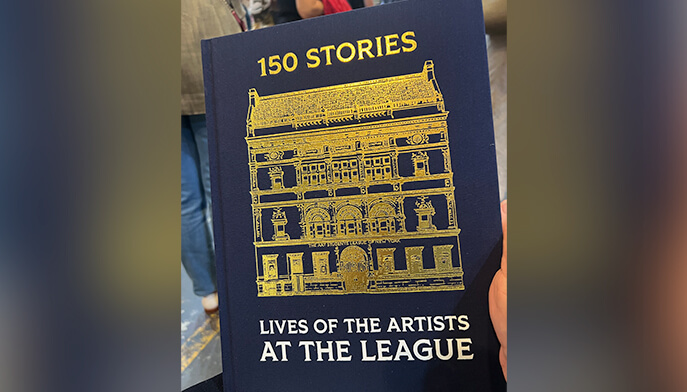
Beyond the presence of his work, the University has repeatedly recognized Vickrey, who raised his family in town, for the significance of his art. In 1986, Richard Camp, Dr. Eliasoph, and Scott Vickrey—Robert’s son—co-produced and co-directed Robert Vickrey: Lyrical Realist, a documentary of Vickrey’s life and work, which was sponsored by the University and broadcast on PBS. The film went on to win the CINE Golden Eagle in 1986 for documentary filmmaking.
From March 23 to April 26, 2009, the Thomas J. Walsh Art Gallery, located in the Quick Center, hosted the exhibition Robert Vickrey: The Magic of Realism, a retrospective of Vickrey’s paintings that contained works from 75 of the nation’s leading art museums. The exhibition coincided with the publication of Dr. Eliasoph’s book, Robert Vickrey: The Magic of Realism, as well as the presentation of the Gerard Manley Hopkins Award for Excellence in the Arts to Vickrey, an award established by the Quick Center and the University in 1990.
“A quintessential Realist, Vickrey endeavored to explore the human condition within a distinctly American environment,” Dr. Eliasoph wrote in Robert Vickrey: The Magic of Realism. In conversation, Dr. Eliasoph recently shared that Vickrey was an artist who “went his own way. With unlimited skill and technical brilliance, he could have been a groovy, new wave '50s/'60s artist, but shared Robert Frost’s poetic vision by taking ‘the road less traveled.’” A longtime friend of Vickrey’s children, Dr. Eliasoph spoke at the artist’s funeral following his passing in April 2011.
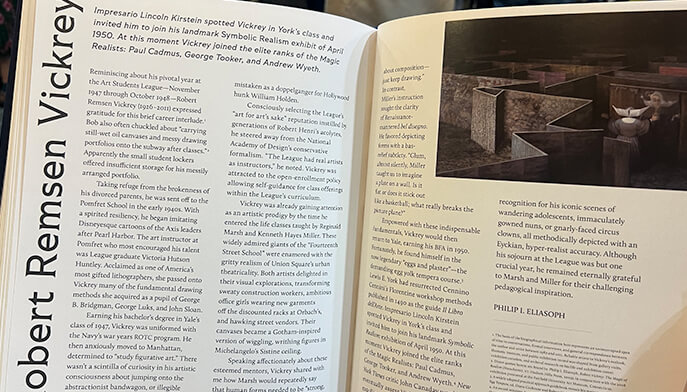
Harmon-Meek Gallery Director Emeritus William Meek—a collaborator of Dr. Eliasoph’s who knew Vickrey for decades and whose gallery is home to a number of Vickrey’s paintings—shared that Vickrey’s paintings “are far more complex and meaningful than most casual observers and even some art critics realize… It may take decades for the art world to fully appreciate what he presented to all of us.”
University and community members may know Dr. Eliasoph as the founding director of the acclaimed Open VISIONS Forum at Fairfield’s Regina A. Quick Center for the Arts, which was recently renamed the Philip I. Eliasoph Open VISIONS Forum in honor of the professor of art history and visual culture’s 50th year at Fairfield. To further honor Dr. Eliasoph’s legacy, the Philip I. Eliasoph Open VISIONS Forum Fund was also established to help bring world-class speakers to the Quick Center stage and to provide greater flexibility in responding to new opportunities.
